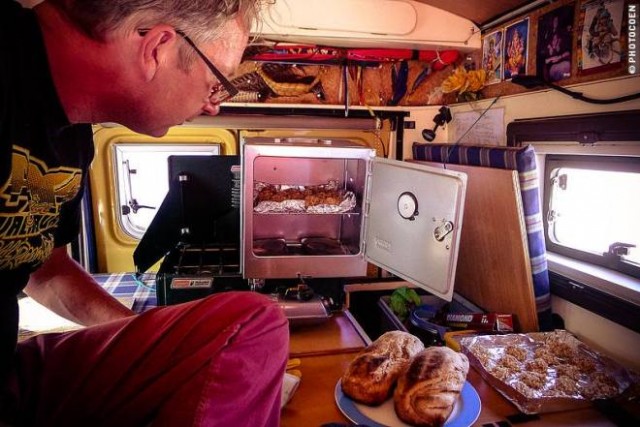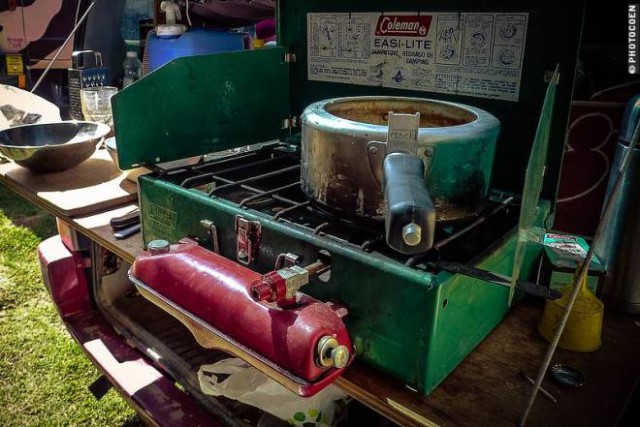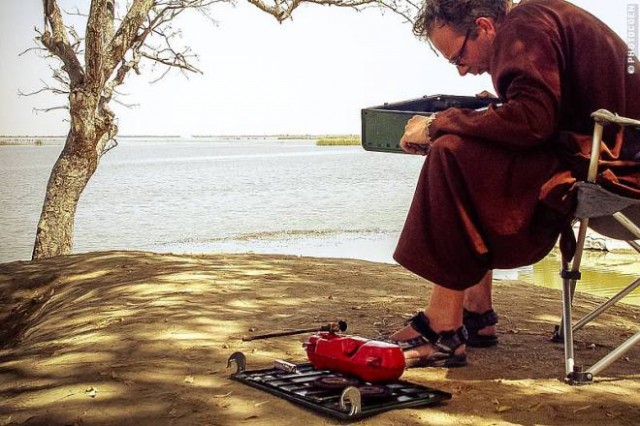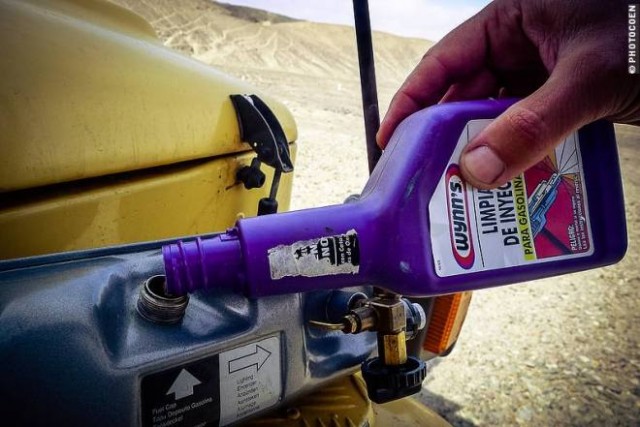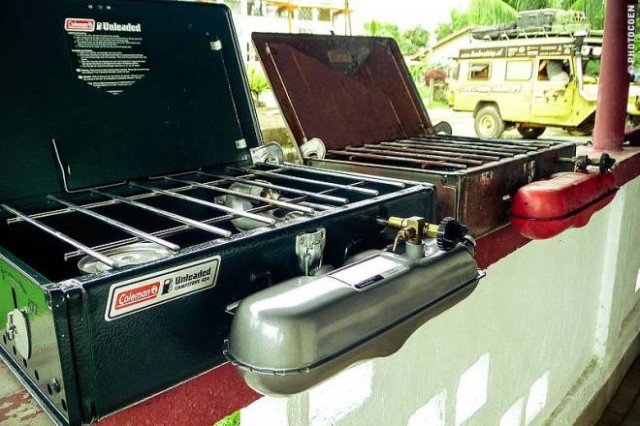Meet Karin-Marijke, Coen and their Toyota Land Cruiser BJ45, on the road in Asia and South America since 2003. They are often characterized as the slowest overlanders in the world but for them it’s all about staying in places and connecting with people. The following is just one of many informative and entertaining posts from their beautiful website: landcruisingadventure.com
Prior to departing on our long journey, we hadn’t actually talked about what cooking equipment we’d bring. What we did know is that we wanted to keep things simple and mobile, and that we didn’t want to build a kitchen inside the Land Cruiser. We wanted to be able to cook inside as well as outside.

Why we Cook on Gasoline – the Coleman Stove
I was scanning the shelves, when all of a sudden my eyes fell on a couple of rectangular, green metal boxes. When I opened one of them, I knew we had found our kitchen set-up. Two old Coleman 425F stoves were stacked between a number of military diesel stoves. These old models with the fancy red tank instantly appealed to us, so we bought one. Together with my friend Bas I thoroughly cleaned it and fired it up with white gas. It burned nice and clean. Great.
In the meantime I had been in touch with Coleman Benelux in order to get more information on this particular stove, and to find out if it would run on normal gasoline.
“No sir, this model only runs on Coleman Fuel.”
“Well, how am I supposed to find Coleman Fuel in, for example, Pakistan?”
“I don’t know sir. Maybe you can take a supply with you?”
“A supply for two years! Isn’t there a way it could run on gasoline?”
“I am sorry sir. That is just not possible.”
This man left me baffled. There must be some way to solve this, I thought, and contacted Coleman in the US. Here, I got a completely different answer. I can’t find the email anymore, but the overall message was that our Coleman stove could burn any fuel. But the cleaner the fuel [Coleman fuel or white gas], the longer the generator [the long tube over the flame which turns the liquid into gas] will stay unclogged. And when it does clog, you will either have to replace it or clean it.
Secrets to the Coleman’s Stove Maintenance
With that answer I felt pretty confident we could use the 425F with normal gasoline as long as I kept tabs on the generator and cleaned it regularly.
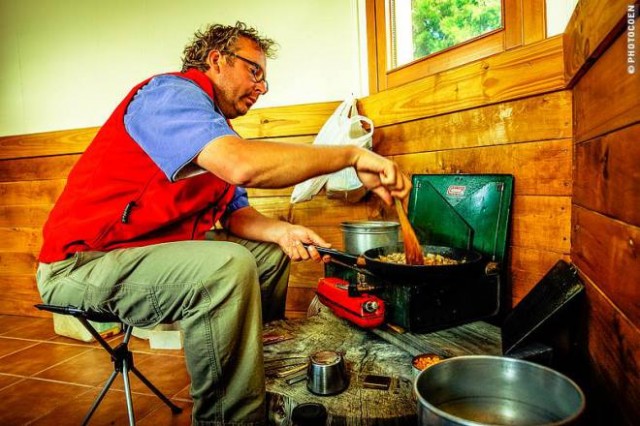
I replaced the valve assembly once, in 2007, and we used 3 generators in 9 years. To clean the generators I bought a .22 rifle cleaning kit
in Bangkok. It came with 3 different brushes and they fit exactly inside the generator pipe. I let the pipe soak in some break cleaner for 24 hours and use the brushes afterwards. To clean the spring and the needle I use a wire brush or a piece of steel wool, but am careful not to damage either the tip of the needle or myself.
We got a great tip from our overlanding friend Mario. His secret was to put in a dash of injector cleaner with each tank filling. This has helped to reduce the clogging of the generator. The injector cleaner has become a regular item on the shopping list.
We have met other overlanders on the road and some have the newer, 424 model with the grey tank, which is designed as an unleaded gasoline fuel burner. Many complain about the difficulties of getting it running and, moreover, how fast it rusts.
I will admit that the Coleman stove isn’t like a normal propane or camping gas where you turn the knob and have a regulated flame. After preheating the generator, getting your flame to burn nicely with blue flames (instead of orange) requires the right pressure. And while altitude and fuel quality have great affects on the blueness of your flame, once you get to know your stove well, I find it not that hard to manage (Karin-Marijke doesn’t entirely agree with me on this issue).
They Mutual Enemy of the Land Cruiser and the Coleman Stove: Rust
After 7 years on the road we hit the tropical Amazon forest. Only then did our red-tank 425F model really start to rust with holes falling in the bottom.
Fortunately, by that time my brother in law Fred had sourced a like-new 424 model on a flee market for next to nothing. And that’s how we got upgraded from red to grey.
We love our Coleman stove and would like to sum up our pros for you:
- It burns really hot (compared to cooking on gas).
- I like its simplicity of dismantling and cleaning.
- We can buy fuel everywhere.
- It works on all altitudes [nozzle doesn’t freeze].
- It’s mobile: we not only can chose to cooke inside our outside of the Land Cruiser, but we even took the stove on a glacier trek in Pakistan.
And of course the cons as well:
- It needs getting used to (Karin-Marijke is still in that process…).
- It needs regular maintenance and cleaning.
If you have any tips on using these stoves, I welcome you to do so in the comment section below.
Oh, and by the way, 10 years later we finally bought a Coleman Camp Oven so we could bake our own bread. You can read all about it here.
update: I found some nice little movies on how to best clean you Coleman Stove. It’s in three parts and I will add them below.
Part one:



